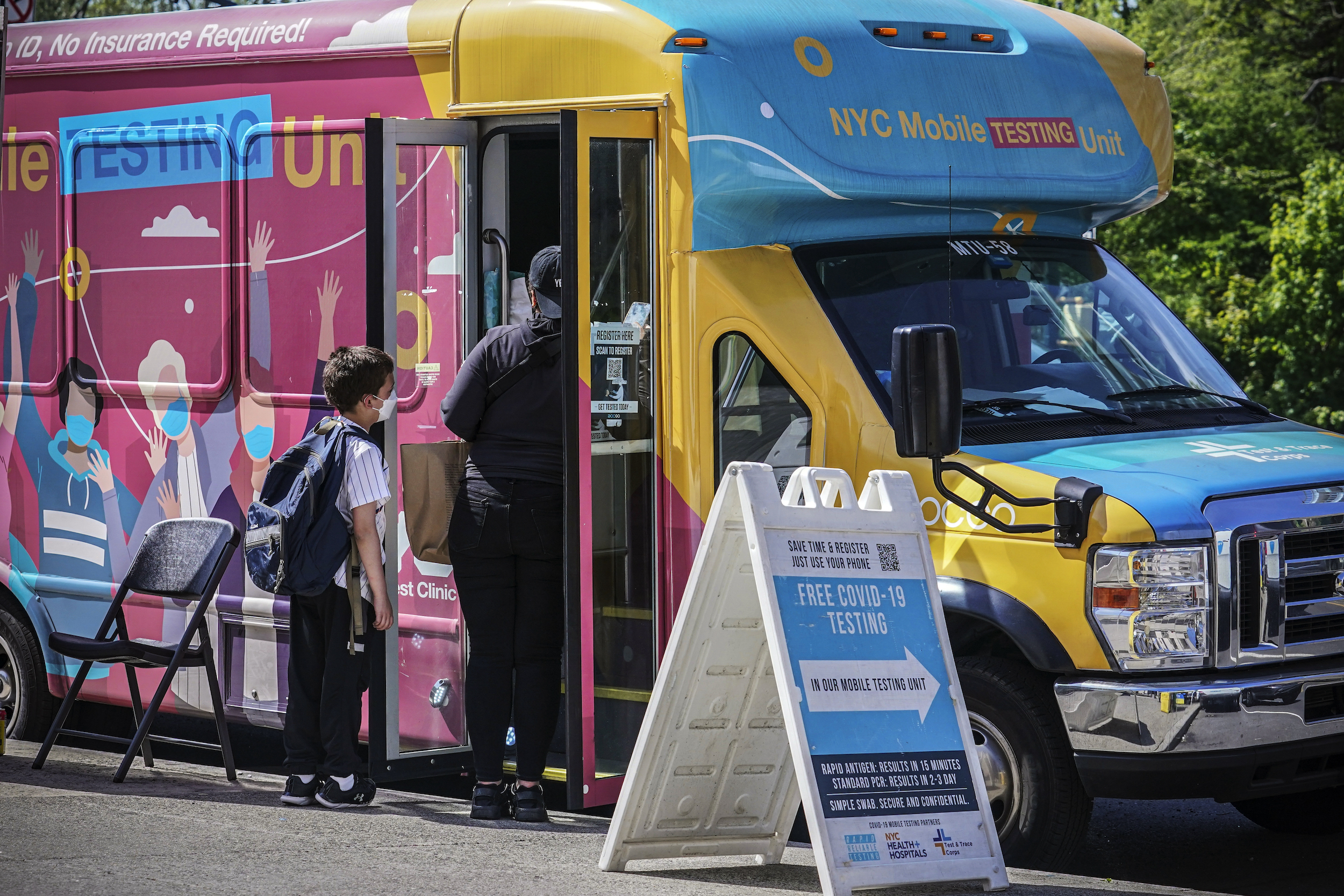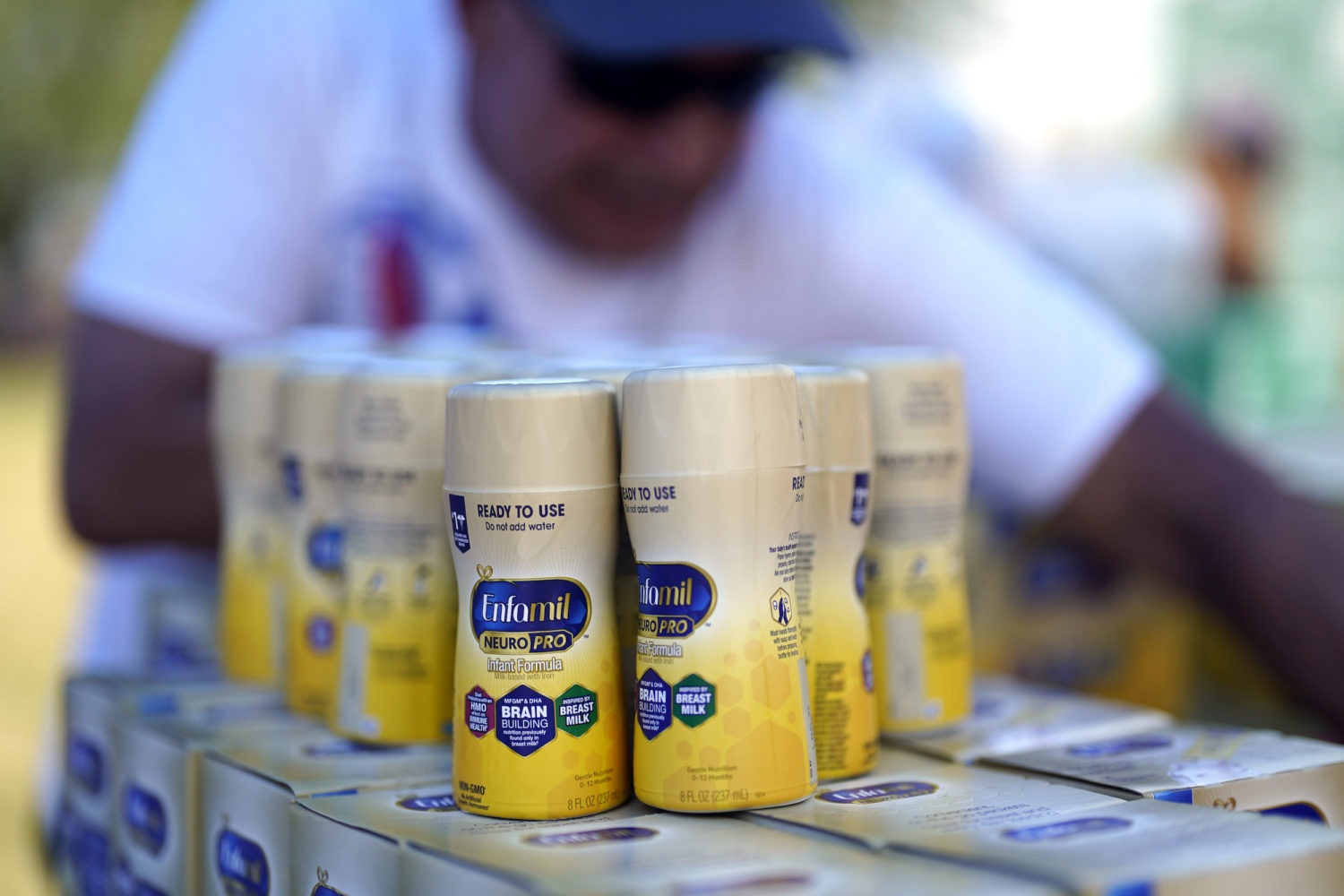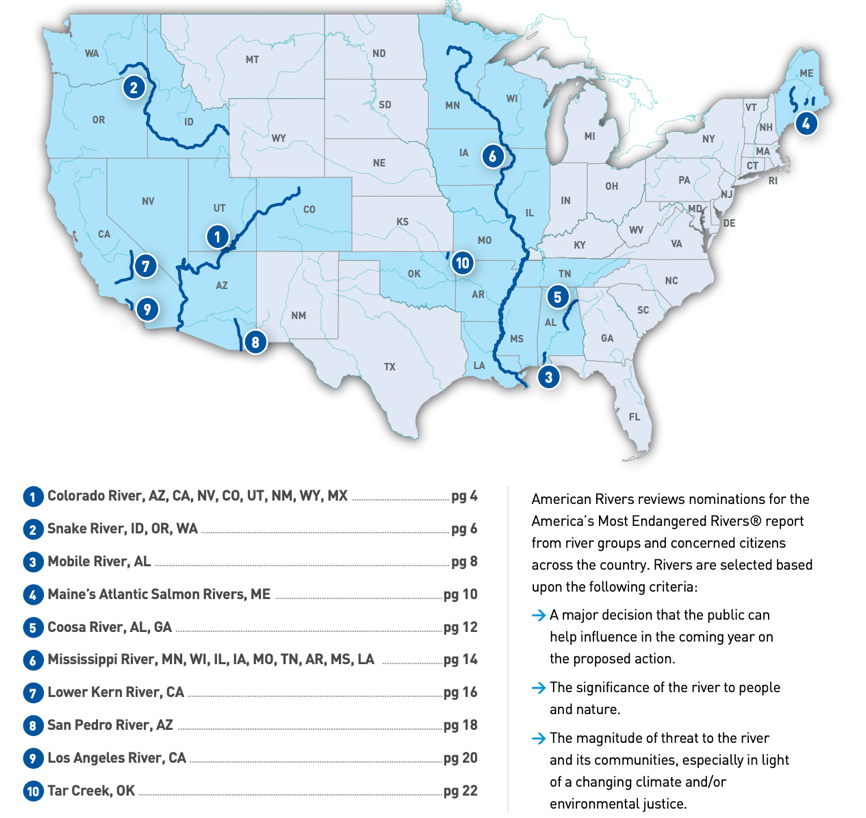 Covering COVID-19 is a daily Poynter briefing of story ideas about the coronavirus and other timely topics for journalists, written by senior faculty Al Tompkins. Sign up here to have it delivered to your inbox every weekday morning.
Covering COVID-19 is a daily Poynter briefing of story ideas about the coronavirus and other timely topics for journalists, written by senior faculty Al Tompkins. Sign up here to have it delivered to your inbox every weekday morning.
The Abbott baby food lab in Michigan, the nation’s largest baby food manufacturing plant, may be up and running in about two weeks, according to the U.S. Food and Drug Administration. That means by the time products ship and hit store shelves, it could be six to eight weeks of shortages ahead.
The Washington Post outlines what is next:
“This is a major step toward re-opening our Sturgis facility so we can ease the nationwide formula shortage,” said Robert Ford, chairman and chief executive of Abbott, who noted that the shortage was also exacerbated by a voluntary recall by the company of formula that had been possibly tainted by a bacteria that sickened and killed infants.
“We know millions of parents and caregivers depend on us and we’re deeply sorry that our voluntary recall worsened the nationwide formula shortage. We will work hard to re-earn the trust that moms, dads and caregivers have placed in our formulas for more than 50 years,” he added. Once the FDA confirms the initial requirements have been met, Abbott could restart operations at the site within two weeks, the company said.
FDA commissioner Robert Califf said the U.S. has about a 40% shortage of baby food right now. NBC News spoke with Califf to get a better idea of what is ahead:
Califf downplayed the notion that the shortage will last through the end of the year.
“We don’t expect that to last to the end of the year, by any means,” he said.
“We’re taking a number of measures, including getting all the manufacturers to step up, getting the Sturgis plant up and going, but also importing a product that was intended for other countries. That’s well underway now. And in fact, I expect by the end of the day today, we’re likely to have an announcement about that path forward.”
With the prospect of at least another month of shortages, the American Academy of Pediatrics issued new guidance for parents of infants who can’t find formula. The pediatricians said in an emergency, cow’s milk could be a safe alternative:
This may be an option if your child is older than 6 months of age and is usually on regular formula (not a specialty product for allergies or other special health needs). In a pinch, you could feed them whole cow’s milk for a brief period of time until the shortage is better. This is not ideal and should not become routine. However, it is a better option than diluting formula or making homemade formula. Although we don’t have a specific amount of cow milk that infants 6-12 months should drink in this situation, follow the limits of no more than 24 ounces a day for children over a year of age. See “Recommended Drinks for Children Age 5 and Younger.”
The pediatricians offered other emergency advice:
What about feeding my baby goat’s milk?
Goat’s milk is not approved for babies in the United States. However, there are goat milk-based baby formulas registered in other countries that may be among those considered for accelerated import approval by the FDA.
Can I use plant-based milk instead of baby formula if needed?
Milk alternatives are not recommended for babies under a year of age or infants with certain medical conditions requiring specialized formulas. Soy milk may be an option to give babies who are close to a year of age for a few days in an emergency, but always buy the kind that is fortified with protein and calcium. Make sure to change back to formula as soon as some is available. Be especially careful to avoid almond milk or other plant milks as these are often low in protein and minerals.
What is the shelf life of baby formula?
Check the “use by” date on infant formula, which is required by FDA regulations to be on each container. Until that declared date, the formula will contain no less than the amount of each nutrient on the product label and will otherwise be of acceptable quality.
Check smaller stores and drug stores, which may not be out of supply when the bigger stores are.
If you can afford it, buy formula online until store shortages ease. Purchase from well-recognized distributors and pharmacies rather than individually sold or auction sites.
For most babies, it is OK to switch to any available formula, including store brands, unless your baby is on a specific extensively hydrolyzed or amino acid-based formula such as Elecare (no store brand exists). Ask your pediatrician about recommended specialty formula alternatives available for your baby.
Toddler formulas are not recommended for infants. However, if you absolutely have no other choice, toddler formula is safe for a few days for babies who are close to a year of age. Formulas designed for babies who were born premature (and have “catch-up” growth to do) can safely be used for a few weeks by full-term babies if nothing else is available.
The FDA is considering accelerated approval of imported formulas. Many sold in Europe, for example, contain adequate nutrients but must be imported in a way that maintains temperature and other safety issues. That’s why FDA oversight is critical.
Axios points out that just a few companies provide practically all of the baby formula used in the United States, so when one manufacturer shuts down, the shortage hits the marketplace fast. One reason there are so few manufacturers is that safety standards are high.
The baby formula shortage has cast a spotlight on the heavily concentrated industry that manufactures the product, sparking a debate over whether import restrictions, “big bottle” or both set the stage for this crisis.
Four companies — Abbott Laboratories, Mead Johnson, Perrigo and Nestle — account for more than 87% of the market, according to IBISWorld.
A combination of manufacturing complexity, distribution challenges, low profit margins, tariffs and regulatory restrictions got us here.
The product is expensive to make because it’s medically sensitive and it’s tightly regulated by the FDA, whose temporary shutdown of the Abbott Nutrition plant in Sturgis, Michigan, after a foodborne pathogen was discovered there has exacerbated the shortage.
“The difficulty of shipping dairy-based products overseas” has historically limited imports, according to an IBISWorld report.
Plus, European Union imports are largely prohibited since it’s harder to oversee those factories. Such imports still occur on the black market, and free-market advocates say they can be imported safely, according to the Cato Institute, a libertarian think tank.
RELATED TRAINING: Enroll in Poynter’s Summit for Reporters and Editors with Tom Huang by June 17, 2022.
Online groups form to help families find formula
Allie Seckel of @theformulafairy has made a Facebook group to facilitate the same thing. They are creating infographics about how to find formula, which formula brands or types can be substituted for another, safety tips for accepting donations from other parents, and warning against misinformation like potentially dangerous homemade formula recipes floating around the internet. And they are sharing the realities of the shortage to try to bring awareness to the extent of the problem.
One video Seckel posted to TikTok, which has been viewed more than 55,000 times, shows slide after slide of bare shelves, submitted by her followers.
“I just got like dozens and dozens of pictures of shelves with like, four cans of formula on them… the lengths that some people are having to go is horrible,” Seckel, a 27-year-old from Alaska, told me.
The Department of Health and Human Services offered some resources that might help:
Manufacturer Hotlines
Gerber’s MyGerber Baby Expert : reach a certified nutrition or lactation consultant by phone, text, Facebook Messenger, web chat, or video call, who can help you identify a similar formula that may be more readily available
Abbott’s Consumer Hotline: call 1-800-986-8540
Abbott’s urgent product request line : ask your OBGYN or your infant’s pediatrician to submit an urgent product request by downloading and completing the form – PDF
Reckitt’s Customer Service line: call 1-800 BABY-123 (222-9123)
Community Resources
Locate your nearest Community Action Agency (CAA) . Your neighborhood CAA may be able to provide you with formula or connect you with local agencies that have formula in stock.
United Way’s 2-1-1 : dial 2–1-1 to be connected to a community resource specialist affiliated with United Way who may be able to help you identify food pantries and other charitable sources of local infant formula and baby food.
Feeding America : call your local food bank to ask whether they have infant formula and other supplies in stock.
Human Milk Banking Association of North America (HMBANA): certain HMBANA-accredited milk banks are distributing donated breast milk to mothers in need; please note that some may require a prescription from a medical professional. Find an HMBANA-accredited milk bank .
WIC-Eligible Families
Contact your local WIC office to identify or obtain additional sources of infant formula nearby.
General Guidance
Call your OBGYN or pediatrician to see if they have in-office samples or can suggest a similar formula that may be more readily available in stores and is nutritionally similar to your infant’s typical formula.
As new COVID-19 cases near pandemic highs, vaccine rationing could be next

A mobile COVID-19 testing van is open for walk-in clients in the Brooklyn borough of New York. The U.S. death toll from COVID-19 has hit 1 million, less than 2.5 years into the outbreak. (AP Photo/Bebeto Matthews)
The Centers for Disease Control and Prevention no longer emphasizes new case counts as a key measurement of the state of the pandemic, but new cases are at nearly the highest level since November.
Minnesota, Michigan, Illinois, Wisconsin, Washington state and most of the Northeast have the highest new case counts. Alaska, Texas, New Mexico, Florida and Colorado have some hot spots, too.
And while Congress is stuck on whether to allot more money for vaccines and other treatments, the Biden administration may soon find itself imposing vaccine rationing to spread out supplies.
North Korea records 1 million COVID-19 cases
In a matter of a week, North Korea’s COVID-19 infections have ballooned to a million cases. North Korean leader Kim Jong-un ordered a nationwide lockdown and told infected people to gargle with saltwater to fight “the fever.” Until now, North Korea has rejected outside offers to send vaccines and other supplies.
America’s endangered rivers: Is one near you?
The environmental group American Rivers generated a list of “America’s most endangered rivers” for 2022. These are the top 10 on the list:
Tom Kiernan, president and CEO of American Rivers, said, “The water supplies and well-being of tens of millions of people are at risk.”
The American River report starts this way:
Catastrophic drought. Disastrous floods. Fish and other freshwater species nearing extinction, as rivers heat up. Many people in the United States have imagined climate change as a problem in the future. But it is here now, and the primary way that each of us is experiencing climate change is through water. The climate crisis is a water crisis.
The Society of Environmental Journalists published a tip sheet by Joseph Davis with a ton of ideas to help you get started on this story:
Even if your river has not been on the “endangered rivers” list, you can borrow the many methods American Rivers uses to explore river issues.
For example, talk to local conservation and development groups. These will vary river by river. And, of course, don’t feel a need to parrot American Rivers’ perspective (not every dam is bad).
Here are some more questions to get you started:
- How is climate change affecting your river? Will there be more drought? More flooding? Both?
- What is climate change doing to fish or recreation? What is it doing to flow and pollution?
- Do fish use your river to migrate for spawning? Is their migration obstructed by dams or other river-control structures? How are fish affected by changes in temperature or flow?
- Is there navigation on your river? Hydropower? Locks?
- Are there dams on your river? If so, what are they for? What are their ecological effects? Are there any abandoned dams on your river? Any plans to remove them?
- Are there any fish consumption advisories in your watershed? What are the sources of pollution that may be harming fish or making them unsafe to eat? What is being done about that?
- Is your river used as a source of drinking water? What is the quality of the water going into the intakes of your drinking water system? What are the sources of any pollutants of concern and what is being done about it?
- What are the dominant land uses in the watersheds that drain into your river? What are their effects on water quality? What (if anything) is being done to protect the watershed and the runoff it supplies?
- Are any parts of your river “impaired” waters under Section 303(d) of the Clean Water Act? Has the state set a “total maximum daily load” for pollutants of concern?
- What are the major uses of the water in your river? Do they ever conflict?
- How would your river fare under different versions of the “waters of the U.S.” rule, which the Supreme Court is currently pondering?
- Is water taken out of your river for irrigation or other purposes? Where does it go or drain to? Does any of the drainage go back to the river?
- What laws and legal constraints apply to your river (Western and Eastern water law are different)? Who gets to use it? Who gets to “withdraw” water?
- Who owns the land adjacent to the river? Can owners build on it? Have they already? How does this affect the river?
- Is there public access to your river for boating, fishing or swimming? Is it restricted to certain places? How accessible is the river to disadvantaged people? Are there conflicts over access?
SEJ’s website also has some links to resources to launch you on your way to covering this critically important story. How many local news organizations are in cities adjacent to a river? Isn’t that why so many cities sprang up to begin with? And yet I suspect few newsrooms have real river experts, despite how critical the river is to your economy and vitality.
We’ll be back tomorrow with a new edition of Covering COVID-19. Are you subscribed? Sign up here to get it delivered right to your inbox.








